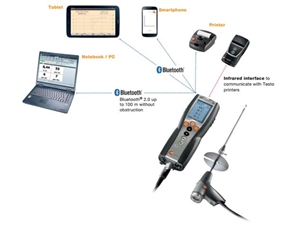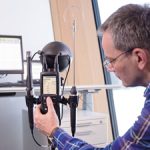Cummins Power Generation delivers gas- and diesel-powered engines to original equipment manufacturers (OEMs), as well as to companies in the marine, industrial and agricultural sectors. To ensure their products are operating appropriately, they use Testo’s emissions analysers, verifying that their solutions are compliant no matter what the application.
We had the opportunity to speak with Cummins Project Engineer Shirantha Perera, who spoke more about Cummins’ operations and how Testo’s instruments support them.
1. What does Cummins do?
“We provide stationary engines for power generation, agriculture, mining.”
Our primary products are diesel and gas engines. With those products we’ve built solutions and services around power generation in industrial, marine, agricultural and vehicle (both off-road and on-road) applications. We also have turbo-charging, alternator and filtration businesses.
Basically, the diesel and gas engines provide the foundations of our wider services. For example, with these products we can build turnkey stations and standby generation systems.
A large part of our business comes from original equipment manufacturers, which use our products to generate power in a wide variety of heavy-duty vehicles.
2. To which industries does Cummins provide stationary engines?
We typically provide stationary engines for power generation, agriculture, mining and other similar industries. Most of our engines are used for pumps.
3. What is the criteria you look at to make sure the engines are operating safely and effectively?
We have an application engineer in the team who assesses the customer inquiry and deduces whether or not our products will suit a particular operation. He or she then states which modifications or attachments the engine will require. The application engineer also reviews any safety concerns associated with the engine.
Throughout this assessment, the application engineer scrutinises environmental factors (altitude, dustiness, temperature) and ensures the engine is compliant with Environmental Protection Authority (EPA) emissions regulations.
 Cummins provides engines to off-road truck OEMs.
Cummins provides engines to off-road truck OEMs.4. Do you need to meet any EPA guidelines? Are you subject to their licensing process or is the operator?
The licensing applies to the customer. However, the responsibility of ensuring the system adheres to the stipulations associated with the license falls on us. Basically, the customer provides the licensing details to us and we design the system accordingly.
For example, if the license requires an engine to abide by particular emissions regulations, we apply modifications so the product is compliant. We review whatever treatments or after-market products we need to implement, such as oxidation catalysts, SCR systems or any other noise suppression components.
The thing is, we’re not implementing engines. Rather, we’re implementing comprehensive systems. For instance, if we’re developing a solution for a power station, the EPA will set noise modelling and goal-level concentrations emissions monitoring (also known as emissions modelling).
Based on the engine’s emissions, the output of the concentration limits will change. To meet the required EPA level, we need to treat the exhaust gas, typically by installing oxidation catalysts.
5. Which of Testo’s instruments do you use?
Our commissioning teams use testo 340 flue gas analysers to help them tune engines. The instruments calculate emissions values, which tell our experts what needs to be adjusted. The process typically involves applying modifications, testing the emissions and seeing whether or not the exhaust is complaint with EPA standards.
The thing we like about the testo 340 is that it’s very easy to use. It doesn’t require a lot of attachments to fix it onto exhaust tanks or whatever emissions source we’re trying to measure. Not to mention, it doesn’t need a lot of maintenance – it’s really handy.
6. Have there been any instances when testo’s customer service and support teams have assisted you?
Testo’s pretty quick to service their instruments. It doesn’t take them long to fix them if there’s an issue. We’ve never experienced a major disruption when the company’s been working on one of our devices. In addition, whenever one of our application engineers has a question about a particular feature, Testo’s technical team has always been really helpful.









 Reduce cooking oil costs while ensuring quality
Reduce cooking oil costs while ensuring quality Expert knowledge on CO2 monitoring
Expert knowledge on CO2 monitoring Refrigeration knowledge - in 3 modules
Refrigeration knowledge - in 3 modules



